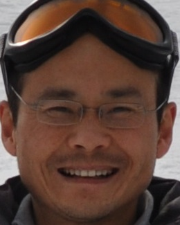
Ming Zhao
Research Areas
Authored Publications
Sort By
YouTubeCat: Learning to Categorize Wild Web Videos
Preview
Zheshen Wang
Baoxin Li
IEEE Conf on Computer Vision and Pattern Recognition (CVPR) (2010)
Taxonomic Classification for Web-based Videos
Preview
Xiaoyun Wu
IEEE Conf on Computer Vision and Pattern Recognition (CVPR), IEEE (2010)
A Large-Scale Taxonomic Classification System for Web-based Videos
Preview
Reto Strobl
John Zhang
the 11th European Conference on Computer Vision (ECCV 2010)
Tour the world: a technical demonstration of a web-scale landmark recognition engine
Preview
Yan-Tao Zheng
Ulrich Buddemeier
Fernando Brucher
Tat-Seng Chua
MM '09: Proceedings of the seventeen ACM international conference on Multimedia, ACM, New York, NY, USA (2009), pp. 961-962
Tour the World: building a web-scale landmark recognition engine
Preview
Yantao Zheng
Ulrich Buddemeier
Fernando Brucher
Tat-Seng Chua
International Conference on Computer Vision and Pattern Recognition (CVPR) (2009)
Audiovisual Celebrity Recognition in Unconstrained Web Videos
Preview
Pedro Moreno
Proceedings of the IEEE Conference on Acoustics, Speech, and Signal Processing (ICASSP) (2009)
Markovian Mixture Face Recognition with discriminative face alignment
automatic face and gesture recognition, ieee (2008)
Preview abstract
A typical automatic face recognition system is composed
of three parts: face detection, face alignment and face
recognition. Conventionally, these three parts are processed
in a bottom-up manner: face detection is performed first,
then the results are passed to face alignment, and finally
to face recognition. The bottom-up approach is one extreme
of vision approaches. The other extreme approach
is top-down. In this paper, we proposed a stochastic mixture
approach for combining bottom-up and top-down face
recognition: face recognition is performed from the results
of face alignment in a bottom-up way, and face alignment
is performed based on the results of face recognition in
a top-down way. By modeling the mixture face recognition
as a stochastic process, the recognized person is decided
probabilistically according to the probability distribution
coming from the stochastic face recognition, and the
recognition problem becomes that “who the most probable
person is when the stochastic process of face recognition
goes on for a long time or ideally for an infinite duration”.
This problem is solved with the theory of Markov chains
by modeling the stochastic process of face recognition as a
Markov chain. As conventional face alignment is not suitable
for this mixture approach, discriminative face alignment
is proposed. And we also prove that the stochastic
mixture face recognition results only depend on discriminative
face alignment, not on conventional face alignment.
The effectiveness of our approach is shown by extensive experiments.
View details
